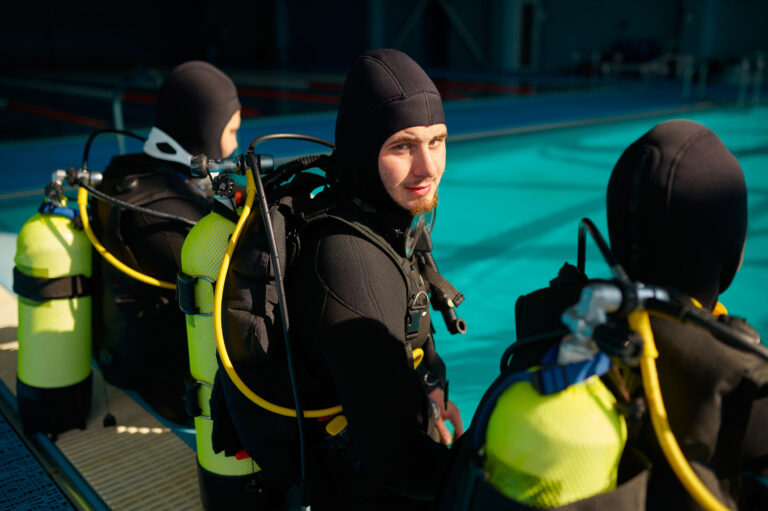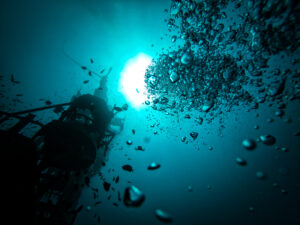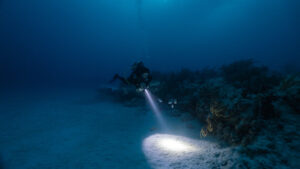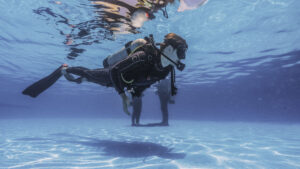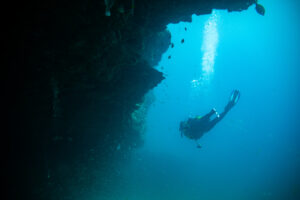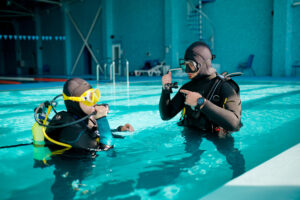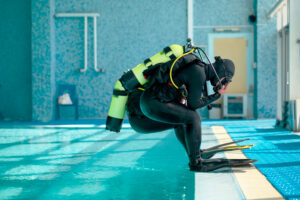What are Diving Signals?
Diving signals are the primary means of communication between divers when they are underwater. Unlike the surface world, verbal communication is impossible underwater due to the limitations imposed by the diving environment, such as water density and the need for breathing apparatus. As a result, divers rely on a well-established set of visual and tactile signals to convey messages. These signals are essential for ensuring safety, coordinating activities, and sharing observations during a dive. The development and standardization of these signals have been critical to the advancement of both recreational and professional diving, allowing divers from different backgrounds and experiences to communicate effectively.
Historical Development of Diving Signals
The concept of underwater communication dates back to the earliest days of diving. Early divers, who used rudimentary equipment and techniques, quickly recognized the need for a system of communication that could work in an environment where sound does not travel well. Initially, these systems were informal and varied widely between diving communities. However, as diving became more popular and equipment more sophisticated, the need for standardized signals grew. By the mid-20th century, organizations such as the Professional Association of Diving Instructors (PADI) and the National Association of Underwater Instructors (NAUI) began to formalize a set of hand signals. These signals were designed to be intuitive, easy to perform with gloved hands, and visible in various underwater conditions.
The standardization of diving signals was a significant milestone in diving safety and education. With a common set of signals, divers from different regions and training backgrounds could communicate effectively, reducing the risk of misunderstandings that could lead to accidents. Over time, these signals have been refined and expanded to cover a wide range of scenarios, from routine communication to emergency situations. The adoption of these standardized signals by diving schools and organizations worldwide has played a crucial role in promoting safety and consistency in diving practices.
Types of Diving Signals
There are several types of diving signals, each suited to different conditions and purposes. The most commonly used signals are hand signals, which are versatile and effective in most underwater environments. Hand signals are performed using specific gestures that convey distinct messages, such as “OK,” “problem,” “ascend,” and “descend.” These signals are designed to be easily recognizable and unambiguous, even when visibility is poor or when divers are wearing thick gloves.
In addition to hand signals, divers also use light signals, especially in low-visibility conditions or during night dives. Light signals involve using a dive light or flashlight to create patterns or flashes that convey messages. For example, a series of rapid flashes might indicate an emergency, while a steady beam directed at a specific object can draw attention to it. Light signals are particularly useful for communicating over longer distances or when hand signals might not be visible.
Another important form of underwater communication is rope signals, which are primarily used in cave diving or wreck diving. In these environments, divers may be tethered to a guide line or each other for safety. Rope signals involve a series of predefined tugs or pulls on the rope to convey messages. For instance, a single tug might mean “stop,” while two tugs could mean “advance.” These signals are crucial in environments where visibility is extremely limited, and divers need to communicate without direct visual contact.
Standard Hand Signals and Their Meanings
Hand signals form the backbone of underwater communication, and there are several standard signals that every diver learns during their training. One of the most fundamental signals is the “OK” signal, made by forming a circle with the thumb and index finger while extending the other fingers. This signal is used to indicate that everything is fine and can be used both as a question (“Are you OK?”) and a response (“I’m OK”). Another essential signal is the “problem” signal, made by extending a flat hand and tilting it side to side. This signal alerts dive buddies to a potential issue that needs attention.
Emergency signals are among the most critical hand signals divers must know. The “out of air” signal, for example, is made by moving a flat hand across the throat in a cutting motion. This signal indicates that a diver is out of breathable air and needs immediate assistance. Similarly, the “help” signal involves waving one or both arms above the head, signaling that the diver is in distress and requires urgent help.
Direction and instruction signals are also vital for coordinating movements underwater. The “ascend” signal is performed by extending the thumb upward, while the “descend” signal is indicated by extending the thumb downward. The “level off” signal, which instructs divers to maintain their current depth, is made by extending a flat hand palm-down and moving it horizontally. These signals help divers maintain proper positioning and depth, ensuring a safe and organized dive.
Signals for marine life sightings are an exciting aspect of diving communication. Divers often use specific signals to indicate the presence of various marine animals. For instance, the signal for a shark is made by placing a hand on the forehead with the fingers pointing upward, mimicking a shark’s dorsal fin. The signal for a turtle involves placing both hands together with thumbs extended, representing a turtle’s flippers. These signals not only enhance the diving experience but also ensure that divers can share their observations without disturbing the marine environment.
Using Diving Signals in Different Diving Conditions
Diving conditions can vary greatly, and the effectiveness of diving signals can be influenced by factors such as visibility, current strength, and lighting. In clear water with good visibility, hand signals are usually sufficient for most communication needs. Divers can easily see each other’s gestures, and communication is straightforward. However, in low-visibility conditions, such as murky water or during night dives, divers need to adapt their signaling techniques. Light signals become more important in these situations, as they can be seen over longer distances and through particulate matter in the water.
Strong currents present another challenge for underwater communication. In such conditions, divers must be more deliberate and exaggerated in their hand signals to ensure they are understood. Additionally, maintaining close proximity to one’s dive buddy is crucial, as currents can quickly separate divers and make communication difficult. Pre-dive briefings become even more important in these scenarios, as divers need to agree on specific signals and protocols to use during the dive.
Environmental factors can also affect the interpretation of signals. For example, the angle of sunlight penetrating the water can create glare, making it hard to see hand signals. In these cases, divers might need to use more distinct and exaggerated movements or resort to light signals. Similarly, the presence of particulate matter or marine life can obscure signals, necessitating adaptations in communication techniques. Divers must remain flexible and attentive, ready to adjust their signaling methods based on the conditions they encounter.
Training and Standardization
Effective communication underwater relies on proper training and the standardization of signals. Diving certification agencies play a pivotal role in this process. Organizations such as PADI, NAUI, and the International Association of Nitrox and Technical Divers (IANTD) include comprehensive training on diving signals in their certification courses. These courses teach divers the meanings of standard signals, how to perform them correctly, and the importance of clear communication.
Training methods for diving signals typically involve both classroom instruction and practical application. In the classroom, divers learn the theoretical aspects of communication and familiarize themselves with the standardized signals. Practical training, often conducted in a pool or controlled open water environment, allows divers to practice using these signals in real-world scenarios. This hands-on experience is crucial for developing the muscle memory and confidence needed to use signals effectively.
Pre-dive briefings are another critical aspect of communication training. Before every dive, divers review the planned signals and ensure that everyone in the group understands them. This practice helps prevent misunderstandings and ensures that all divers are on the same page. Divers are also encouraged to develop specific signals for unique situations or preferences, as long as these signals are clearly understood by all participants. Continuous practice and reinforcement of these skills are essential, as effective communication is a key component of safe diving.
Safety Considerations and Communication Challenges
Clear communication is vital for preventing accidents and ensuring the safety of all divers. Misunderstandings or misinterpretations of signals can lead to dangerous situations, such as incorrect responses to emergencies or uncoordinated actions. Therefore, divers must be diligent in practicing and using signals correctly. Regular training and refresher courses can help maintain proficiency and keep divers up to date with any changes in standard signals.
One of the challenges in underwater communication is the presence of multi-lingual dive groups. Divers from different linguistic backgrounds might have different interpretations of signals or use variations that are not universally recognized. To address this, diving instructors emphasize the importance of standardization and the use of universally accepted signals. Pre-dive briefings become especially important in these scenarios, as they provide an opportunity to clarify any potential differences and agree on a common set of signals.
Environmental factors, such as poor visibility and strong currents, can also complicate communication. Divers must be prepared to adapt their signaling techniques to suit the conditions. For instance, in low visibility, light signals might be more effective than hand signals. In strong currents, divers need to stay close together and use more exaggerated gestures to ensure they are seen. Being aware of these challenges and proactively addressing them is crucial for maintaining effective communication and ensuring safety.
Key Takeaways
Diving signals are an essential aspect of underwater communication, enabling divers to convey messages and coordinate actions effectively. Their development and standardization have significantly enhanced diving safety and efficiency. Divers must be well-versed in the standard signals, continuously practice their use, and be prepared to adapt their communication techniques to different conditions. Understanding and effectively using diving signals is a fundamental skill that enhances the diving experience and ensures the safety of all participants.

